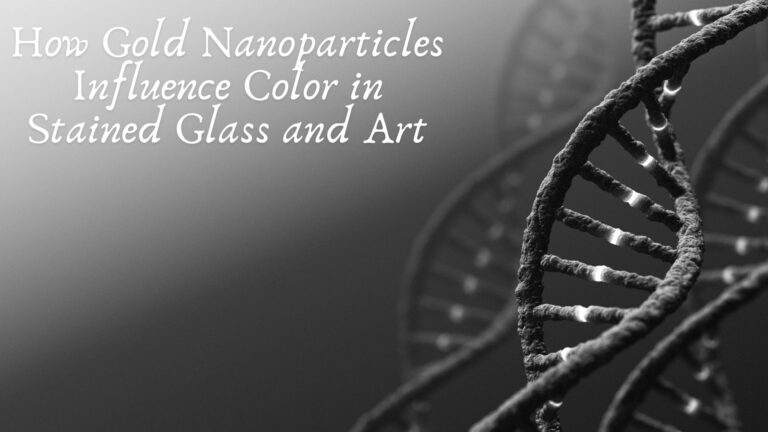Introduction
Gold has been used for centuries to create stunning colors in stained glass and artworks. The secret behind these vibrant hues lies in gold nanoparticles (AuNPs), which interact with light in a unique way. This article explores how gold nanoparticles influence color in stained glass and artistic creations, delving into the science behind their optical properties, historical significance, and modern applications.
The Science Behind Gold Nanoparticles and Color
Gold nanoparticles are incredibly small, ranging from 1 to 100 nanometers in diameter. Unlike bulk gold, which appears yellow and metallic, nanoparticles exhibit different colors depending on their size, shape, and surrounding environment. This phenomenon is due to surface plasmon resonance (SPR)—a process where conduction electrons on the surface of nanoparticles oscillate in response to incident light.
- Small gold nanoparticles (less than 10 nm) appear red or pink.
- Larger gold nanoparticles (20–100 nm) can exhibit hues from purple to blue.
- Changes in shape (spherical vs. rod-shaped) influence light absorption and reflection, further modifying color perception.
Historical Use of Gold Nanoparticles in Stained Glass
During the medieval period, artisans unknowingly harnessed the power of gold nanoparticles to produce brilliant reds and purples in stained glass windows. Craftsmen achieved these effects by carefully dispersing tiny amounts of gold into molten glass, leading to the formation of nanoparticles upon cooling.
Notable examples include:
- The Cathedrals of Europe: Many Gothic cathedrals feature stained glass windows that owe their vivid red hues to gold nanoparticles.
- The Lycurgus Cup (4th century AD): A remarkable Roman artifact that shifts from green in reflected light to red in transmitted light, demonstrating early nanotechnology in glassmaking.
Modern Applications in Art and Technology
Gold nanoparticles continue to be used in contemporary art, conservation, and technology. Artists and scientists collaborate to recreate historical stained glass effects and develop innovative applications.
Contemporary Glass Art
Modern glass artists experiment with gold nanoparticles to produce novel color effects that were once only achievable through traditional techniques. Advances in nanotechnology allow for precise control over nanoparticle size and dispersion, leading to customized color palettes.
Restoration of Historical Artworks
Conservationists use gold nanoparticles to restore aged stained glass windows without altering their original compositions. By studying ancient glass formulations, scientists can replicate medieval techniques with modern precision.
Photonic and Optical Technologies
Beyond art, gold nanoparticles play a crucial role in cutting-edge fields such as:
- Optical coatings for decorative and functional glass applications.
- Sensor technology, where color changes in gold nanoparticle coatings signal environmental changes.
- Biomedical imaging, utilizing the optical properties of AuNPs for enhanced visualization techniques.
Conclusion
Gold nanoparticles have profoundly influenced the aesthetics of stained glass and art for centuries. Through the principles of surface plasmon resonance, artisans and scientists alike continue to explore their potential in both historical conservation and modern innovations. As research in nanotechnology advances, gold nanoparticles may open new frontiers in artistic expression and material science, ensuring their legacy in the world of color and design.
